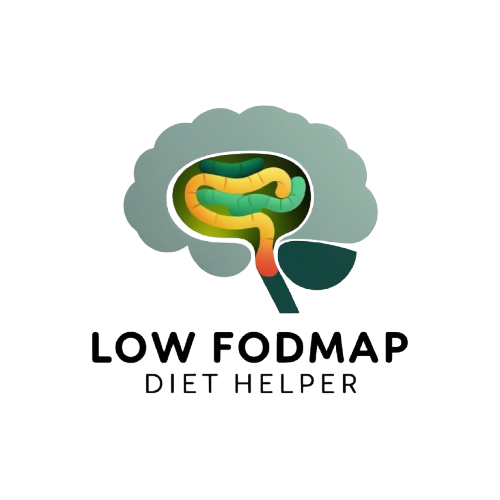(Especially if you have gut issues or sensitive digestion)
If you’ve ever found yourself bloated after a healthy meal or rushing to the bathroom after your morning smoothie, you’ve probably asked yourself this: “What foods should I avoid?”
It’s a question that’s not always easy to answer, especially since what works for one person might upset another’s stomach. But if you’re dealing with digestive discomfort, IBS, or simply feel better on a sensitive gut diet, there’s one area worth exploring: FODMAPs.
Before you panic—no, this isn’t some exotic food group you’ve never heard of. In fact, FODMAPs are found in many everyday ingredients you probably eat regularly!
🤔 First Things First: What Are FODMAPs?
FODMAP stands for:
- Fermentable
- Oligosaccharides (like fructans and galacto-oligosaccharides)
- Disaccharides (like lactose)
- Monosaccharides (like excess fructose)
- Polyols (like sorbitol and mannitol)
These are short-chain carbohydrates that are poorly absorbed in the small intestine and can cause gas, bloating, diarrhea, constipation, and even fatigue or brain fog in some people. So when we talk about what foods to avoid, especially if you have gut sensitivity, we’re often talking about high FODMAP foods.
🚫 Common High FODMAP Foods to Avoid
Here’s a rundown of some common culprits:
🍞 Grains & Breads
- Wheat, rye, and barley (especially in large amounts like in pasta or bread)
- Many commercial gluten-free products (surprise—they’re not always low FODMAP!)
🧅 Vegetables
- Onions and garlic – two of the biggest offenders
- Cauliflower, broccoli stalks, asparagus, mushrooms (especially portobello)
- Leeks, shallots, artichokes
💡 Want a quick way to see which veggies are high FODMAP and which are safe? Try using the Low FODMAP Food Calculator — it helps you search any food instantly!
🍎 Fruits
- Apples, pears, watermelon, mangoes, cherries, plums, peaches
- Fruit juices or dried fruits often contain concentrated FODMAPs
🥛 Dairy
- Milk, yogurt, soft cheeses, ice cream (due to lactose)
- Be wary of cream-based sauces and milky coffees too
🍬 Sweeteners
- Sorbitol, mannitol, xylitol, and maltitol (often found in sugar-free gum or candies)
- Honey and high-fructose corn syrup
🥫 Legumes
- Lentils, chickpeas, kidney beans, black beans
🥦 But Wait—What CAN I Eat?
That’s the beauty of the Low FODMAP Diet. It’s not about cutting out everything forever—it’s about temporarily removing high FODMAP foods, then slowly reintroducing them to figure out what your body tolerates best.
During the elimination phase, you can enjoy plenty of gut-friendly, low FODMAP options, like:
- Rice, quinoa, oats
- Zucchini, carrots, bell peppers, spinach, potatoes
- Blueberries, strawberries, kiwi, pineapple, bananas (unripe)
- Lactose-free dairy or alternatives like almond milk
- Meat, fish, and eggs (unprocessed)
- Herbs and spices like basil, thyme, and rosemary for flavor
🛠️ Need help swapping ingredients in your favorite recipe? The Low FODMAP Food Calculator lets you adjust meals on the fly with easy low FODMAP alternatives. It’s like having a dietitian in your pocket!
✅ The “Avoid” List Isn’t Forever
Here’s something people often forget: The Low FODMAP diet is temporary.
The elimination phase usually lasts 4–6 weeks, followed by a structured reintroduction phase where you test each FODMAP group to see what your body can handle. Many people find they’re only sensitive to one or two categories—so they don’t have to restrict everything long term.
And even within high FODMAP foods, portion size matters. For example, a small amount of broccoli might be totally fine, while a full plate may trigger symptoms.
That’s why using tools like the Low FODMAP Food Calculator is such a game-changer—it doesn’t just say “yes or no,” it shows you what works in the right amounts.
🧡 Listen to Your Gut (Literally)
At the end of the day, there’s no one-size-fits-all list of foods to avoid. Your gut is unique, and your triggers might be different from someone else’s.
But if bloating, cramping, or IBS has been dragging you down, focusing on FODMAPs is a smart place to start.
- Start by identifying the most common high FODMAP foods
- Use the Low FODMAP Food Calculator to double-check your pantry
- Don’t be afraid to modify your recipes—there are safe swaps for almost everything
- And remember: it’s not about restriction forever—it’s about learning what works best for you
📲 Ready to take control of your gut health?
Use the Low FODMAP Food Calculator to start exploring today! Whether you’re cooking, grocery shopping, or just wondering why something upset your stomach, it’s your go-to tool for making low FODMAP life easier.


Leave a Reply